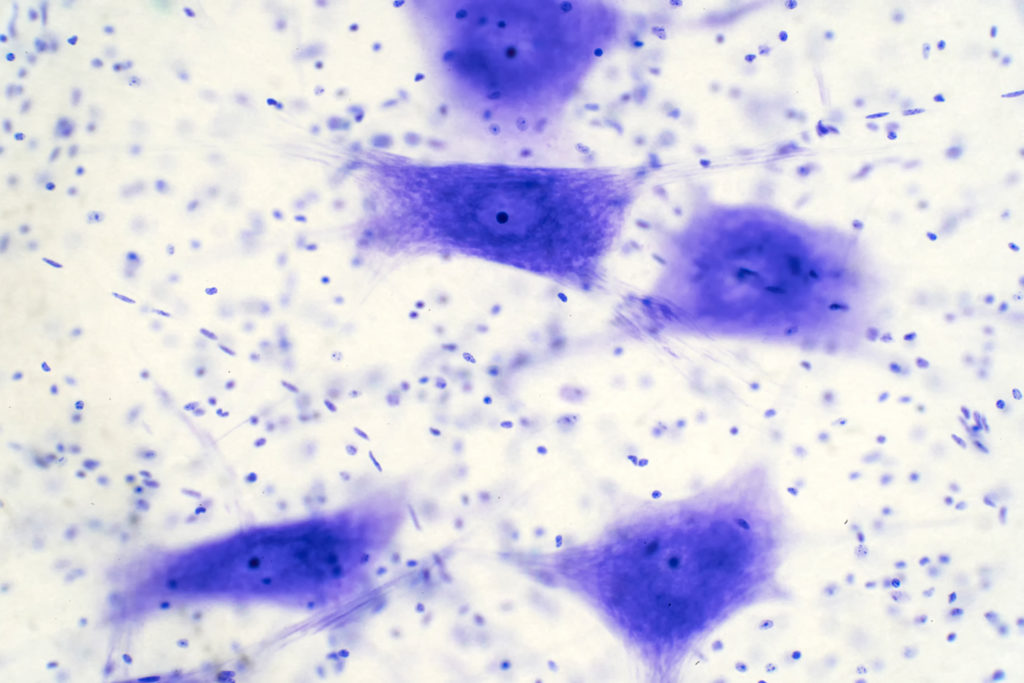Researchers used a bioinformatics approach (ESHRD) that leverages gene expression data from brain tissue to derive cell-type specific alterations in Alzheimer’s disease.

The Trending with Impact series highlights Aging publications attracting higher visibility among readers around the world online, in the news, and on social media—beyond normal readership levels. Look for future science news about the latest trending publications here, and at Aging-US.com.
—
Cell-to-cell variability in the human brain is significantly heterogeneous. An abundance of differential brain cell types makes it laborious and expensive for researchers to generate single-cell gene expression data. While some studies use laser capture microdissection (LCM) and single-cell RNA sequencing (scRNA-Seq) to directly address the cellular heterogeneity in brain tissue, due to labor and cost, these studies generally have a small sample size and face power concerns. Most gene expression profiling studies of patients with Alzheimer’s disease (AD) are conducted post-mortem using brain tissue homogenates.
“Ultimately, the overall goal of gene expression profiling in AD is to understand the transcriptome changes in all major cell types of the brain in a well-powered approach that would facilitate the exploration of all the variables mentioned above.”
The need existed for a cost-effective bioinformatics approach to leverage expression profiling data from brain homogenate tissue to derive cell type-specific differential expression and pathway analysis results. In 2020, researchers from Columbia University Medical Center, The University of Sydney School of Medicine, University of Miami, and the Banner Sun Health Research Institute described an Enrichment Score Homogenate RNA Deconvolution (ESHRD) method for identifying alterations in the brain. They published a research paper in Aging’s Volume 12, Issue 5, entitled: “ESHRD: deconvolution of brain homogenate RNA expression data to identify cell-type-specific alterations in Alzheimer’s disease.”
The Study
“We applied our approach to different gene expression datasets derived from brain homogenate profiling from AD patients and Non-Demented controls (ND) from 7 different brain regions.”
Researchers conducted brain region cell-specific pathway analysis and Gene Set Enrichment Analysis (GSEA). The team mapped and measured five different cell types in seven different brain regions. The cell types included: microglia, neuron, endothelial, astrocyte, and oligodendrocyte. Endothelial and oligodendrocyte are two cell types that are not easily examined in the brain and only very little gene expression data previously existed for Alzheimer’s disease.
“We conducted RNA expression profiling from both brain homogenates and oligodendrocytes obtained by LCM from the same donor brains and then calculated differential expression.”
The researchers used a dataset of Multiple System Atrophy (MSA) patients (n = 4) and controls (n = 5) to validate their ESHRD method. Homogenate, LCM, and scRNA-Seq results were compared using the ESHRD method. They also compared their findings to other research studies.
Results
“The ESHRD approach replicates previously published findings in neurons from AD patient brain specimens, and we extended our work to characterize novel AD-related changes in relatively unexplored cell types in AD, oligodendrocytes and endothelial cells.”
Neuronal, endothelial cells, and microglia were found to be the most represented “cell-specific” gene classes in patient brains with Alzheimer’s disease. Neuronal-specific genes were downregulated and enriched for synaptic processes. Endothelial genes were found to be upregulated in AD and enriched for angiogenesis and vascular functional processes.
“Differentially Expressed Genes (DEGs) we labeled as “mixed” represent the most prevalent class (73.4%), followed by DEGs labeled as microglia (6.6%), neuron (5.9%) and endothelial (5.7%). Astrocyte and oligodendrocyte labeled DEGs have a frequency of 3.6% and 3.1%, respectively.”
Microglia showed different patterns of expression across the brain in multiple regions. They found that astrocyte genes were enriched in SLC transport and immune processes and oligodendrocytes were enriched for the Glycoprotein metabolism in Alzheimer’s disease.
Conclusion
“We demonstrate the ability of this approach to highlight known neuronal-specific changes in the AD brain and utilize it to identify novel changes in endothelial cells and oligodendrocytes, two cell types not easily examined in the brain and for which only minimal gene expression knowledge exists in AD.”
Click here to read the full study, published by Aging.
—
Aging is an open-access journal that publishes research papers monthly in all fields of aging research and other topics. These papers are available to read at no cost to readers on Aging-us.com. Open-access journals offer information that has the potential to benefit our societies from the inside out and may be shared with friends, neighbors, colleagues, and other researchers, far and wide.

For media inquiries, please contact [email protected].